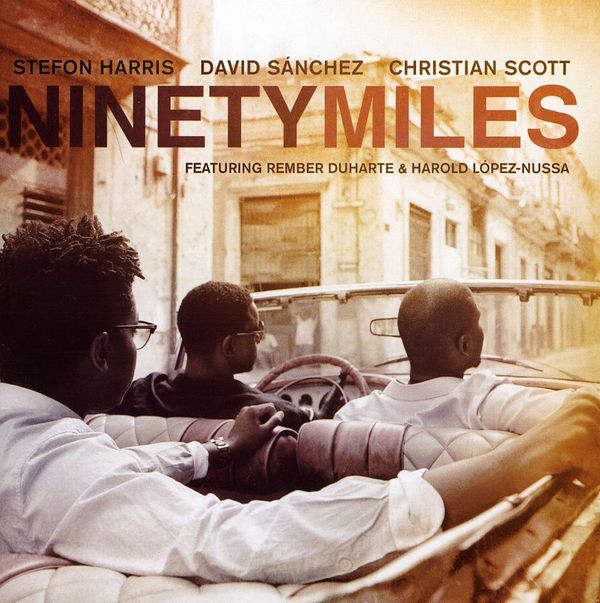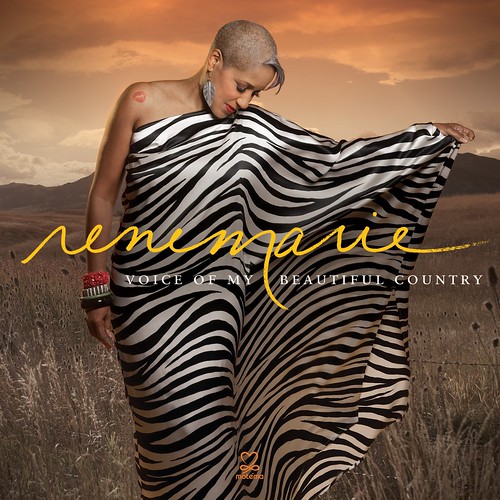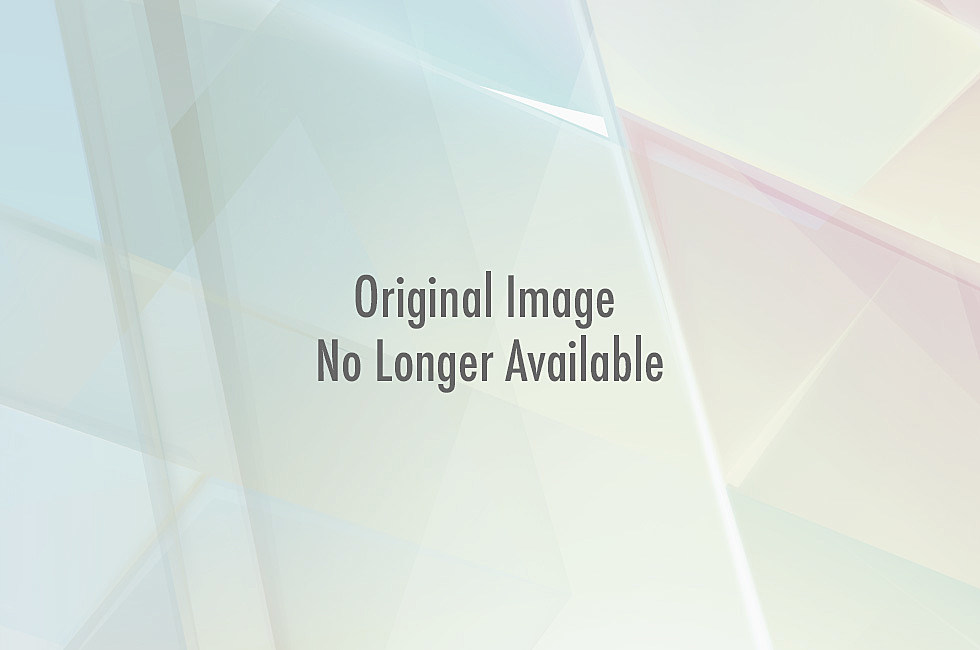 |
| James Carter |
Detroit jazz saxophone player James Carter is having a really good year. In May Decca Records released Carter’s much anticipated first classical album Caribbean Rhapsody Concerto for Saxophone and Orchestra, which critics have called a masterwork. With the recent release of At the Crossroads, Carter’s organ trio celebrated its tenth anniversary. Recently, I Dig Jazz talked to Carter about the two new albums and the trio’s milestone and a few other jazz related topics.
Your organ trio is coming up on its 10th anniversary. What’s the key to keeping a band together that long?
It goes back to my musical father, Donald Washington. He always said longevity is the key, and, of course, that plays well with singular longevity and collective longevity. The longer a group stays together the more it becomes of one mind as the relationship and musicianship progresses. Case and point, look at the classic Coltrane quartet albums Night at the Village Vanguard and One Down One Up. Those recording are great as the result of the band playing together for a while as opposed to doing the recording with pickup bands. Those recordings weren’t some all-star hookup.
Jazz record companies nowadays are big on all-star projects it seems.
I fought tooth and nail with Atlantic Records back in day when they were trying to hook me up with New York-bred individuals. They’d say, “Why don't we try something different?” If I wanted a Detroit drummer, they’d say he played too much hi-hat. You want that on the record?' I’d say, “Yeah!” That's something that can be worked out when the album is mixed. As far as letting them dial in some musician that I wasn’t in tune with, wasn’t going to happen. Especially when this is a document I have to live with for the rest of my life.
Why are you so loyal to Detroit cats?
I think it's because I feel musically and socially connected to them. That definitely makes for a better and more cohesive project. As fate would have it, after the formation with my first group with Tani [Tabbal}, Jaribu [Shahid] and Craig [Taborn] ran its course, that’s when Leonard King and Gerard Gibbs came on board.
Gerard Gibbs is outstanding on At the Crossroads. All the slick tricks you can do on the horns Gerard can do on the organ.
Gerard has grown a heck of a lot. When you look at Live at Baker’ Keyboard Lounge’ recorded in 1996 up until now that's a heck of a lot of growth. And that's definitely come from us growing on stage, and also growing as men. I think he told me a long time ago that music and life don’t separate. With this group, it's not only about us on stage; we check on each other; we check on our families, see if there's anything we can do.
You guys are brothers.
Yeah, and it manifests itself in the music. I can definitely and truly say that.
Does the current generation of Detroit jazz musicians have the same type of no-nonsense mentoring from older cats that your generation had?
Mentoring and the outlets have definitely disappeared. It's funny you mention that, I'm back here in Detroit working on my mom's place. I just put in a new furnace and an alarm system. I was rummaging and going through things.
I came across old newspaper clippings from back in the day. I kept quite a few of them like, there was a one from the Michigan Chronicle that I had. Teddy Harris' band was down at Bomac’s, Larry Smith and Ray McKinney were playing at other clubs, this was all within a week. Teddy's band was also playing at Dummy George's. We could either play with the group if you knew them, or you were a part of that group. Like all that has mad changed within the past 10 years or so.
You are known as a killer improviser, and you have done some amazing shit on the saxophones. You are also a damn fine composer. Why don't you write more?
I actually compose whenever the muse hits or if I’m commissioned. Like if I have an album coming up and we need six banging songs on it or whatever. I mean, the closest I've done something on that end was on ‘Present Tense’. Whenever the vibe hits, and you know, I do have some stuff I’m sitting on that I need to develop more.
You have a knack for putting a spin on obscure jazz tunes. Your take on Julius Hemphill’s tune “The Hard Blues” is a prime example. When you put together an album like At the Crossroads what do you look for?
Well, with At the Crossroads, I think this is the first time that you'll actually see it being billed as a group as opposed to James Carter. We all picked our tunes and OK'd them. On my other albums, I came and said these are the tunes, this is how we're going to do them. We all picked stuff out on this one, it was more of a team involvement. We all brought individual things to the table.
Has the jazz world changed much over the years?
It's definitely changed, as far as the packaging goes, being online and actually using online as one of the main routes to get jazz music out. I think it's a good thing, but at the same time, you miss the connection with the people doing the in-store appearances. Now you have to do live blogs. I guess exposure is exposure either way it goes. If you got people that are able to just tune in the comforts of their home and have music streamed live it’s kind of similar to staying at home with Netflix, or making it a Blockbuster night or whatever. So why go to the concert? So, that's the downside.
Is there an upside?
The upside is, as a musician you're potentially getting a lot more people. Hopefully that will act as a catalyst to get them to the real thing and want to see musicians in real time. So many people I think are just disconnected. Here's the irony, that they are connected you know with cyberspace and all that stuff. It's still real-time music, it's real-time art, it's art of the moment; It's one thing to see it online, but it's another to be in a club.
Could you imagine getting someone saying, “Yeah I heard the Trane at the Vanguard live stream” and get that same effect out of hearing Trane live. My mom talked about the first time she saw Billy Eckstine live at the Paradise Theater in Detroit and how his sound hit her body. You can’t get the same effect listening to an artist streamed live.
The latest thing is how jam sessions are basically replacing group stints at jazz club. If a group was playing and somebody sat in that's just an extra bonus. Like if I happened to be in town I’m going to sit in. Maybe the best case scenario is you'll get somebody like a house band that plays their own set, they'll take a break, then they'll come back and their next two sets they'll open it up for folks to come up and play.
And that's good as far as what the promoters and club owners do, because they're get off cheaper by paying them a certain amount. Their patrons get to hear a whole lot of cats playing. The bad part about that is, the house band or the band that should've been playing their own repertoire, they don't get a chance to grow or play that repertoire. Sometimes the core members of that group wind up going to the bar while somebody else sits in. So there's no growth, and that's becoming the standard at most venues nowadays.
On Caribbean Rhapsody, why did you make the album with the Warsaw Symphony Orchestra instead of the Detroit Symphony Orchestra?
There were some logistic problems. I think when it came time to do it, it was the Warsaw Symphony that stepped up to the plate. We were kind of up in the air because I hadn't heard really much of the Warsaw Symphony.
Of the two new albums which is your favorite?
They're both different children and I've always said that about the albums. I've also said it about horns. They're different people and they do certain things for you. The concerto continues to grow for me, there's been mad growth on that piece since you've seen it at the world premiere with the Detroit Symphony Orchestra.
One of things I love about Caribbean Rhapsody is Roberto Sierra compositions leave plenty of space for you to improvise and play your trademark cadenzas.
I remember showing the compositions to three different saxophone professors and they said, “Who’s going to be able to play all this?” Yeah, the piece has grown big time, and Roberto has put so much harmonic and melodic information in there that I can keep feeding off of for years.
Michael Cuscuna has produced Caribbean Rhapsody and At the Crossroads. How is it working with a living legend?
Well, with him, he's part of one of the soundtracks of our lives. The stuff he used to do for Blue Note, and Mosaic. Inside the studio, he opens up more possibilities.
What some of your future aspirations?
I have aspirations to keeping myself open to all possibilities.































